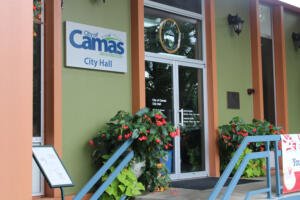What keeps Camas Police Chief Tina Jones up at night? There are a few things, actually — and all of them come back to the well-being of her staff members and of the overall Camas community.
During a presentation to the Camas City Council, on Monday, Nov. 18, Jones listed some of the questions that she says “keep her up at night.”
“Are we prepared to meet our community’s needs, especially during emergencies? Are we providing adequate support, guidance and training for our team, especially our newest members? Are we prepared for a significant critical incident?” Jones said. “Are we adequately balancing wellness for our staff with the ever-increasing demands of the job? How do we mitigate injuries to our team and the public?”
Jones also wonders, considering the fact that 13 Camas police officers — 43% of the department’s current sworn staff — will be eligible for retirement within the next one to five years, if her department is prepared to manage what she calls an impending “retirement cliff.”
As things stand today, Jones told the Council, the answer to that last question is likely, “No.”





